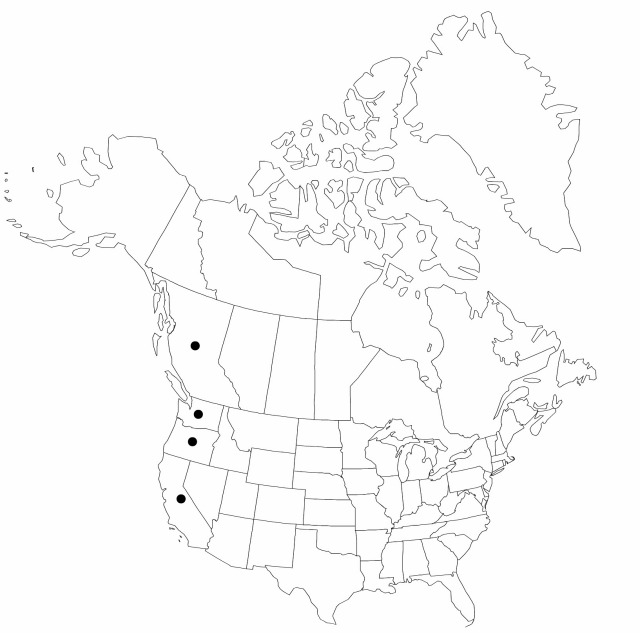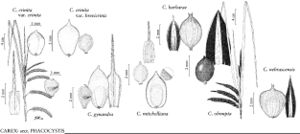Carex obnupta
Proc. Calif. Acad. Sci., ser. 2, 3: 104. 1891.
Plants not cespitose. Culms obtusely or acutely angled, 20–120 cm, glabrous. Leaves: basal sheaths redbrown; sheaths of proximal leaves bladeless, scabrous, fronts with redbrown spots, prominently ladder-fibrillose, apex U-shaped, redbrown; blades hypostomic, 3–7 mm wide, coriaceous, papillose abaxially. Inflorescences: proximal bract longer than inflorescence, 3–6 mm wide. Spikes arching, at least the proximal pendent; staminate 2–3 (–5); pistillate 2–5; proximal pistillate spike usually sessile, 2.5–15 cm × 5–10 mm, base attenuate. Pistillate scales redbrown, longer and wider than perigynia, apex acute, awnless. Perigynia divergent, brown, veinless, somewhat inflated, loosely enclosing achenes, ellipsoid or obovoid, 2.2–3.8 × 1.4–2.2 mm, leathery, glossy, apex rounded, glabrous; beak colorless or with redbrown spots, 0.1–0.3 mm, orifice hyaline. Achenes often constricted on 1 or both margins, glossy; style base often bent. 2n = 70, 72, 74.
Phenology: Fruiting Jul–Aug.
Habitat: Wet meadows, shores, ditches
Elevation: 0–900 m
Distribution

B.C., Calif., Oreg., Wash.
Discussion
Carex obnupta largely replaces C. barbarae north of California and is distinguished from it by the acute scales and the glossy dark brown perigynia that lack veins and have an entire, membranous beak. It is an abundant, almost weedy, plant.
Carex obnupta occasionally hybridizes with C. nudata.
Selected References
None.
Lower Taxa
"shortened" is not a number."longer and wider" is not a number.
